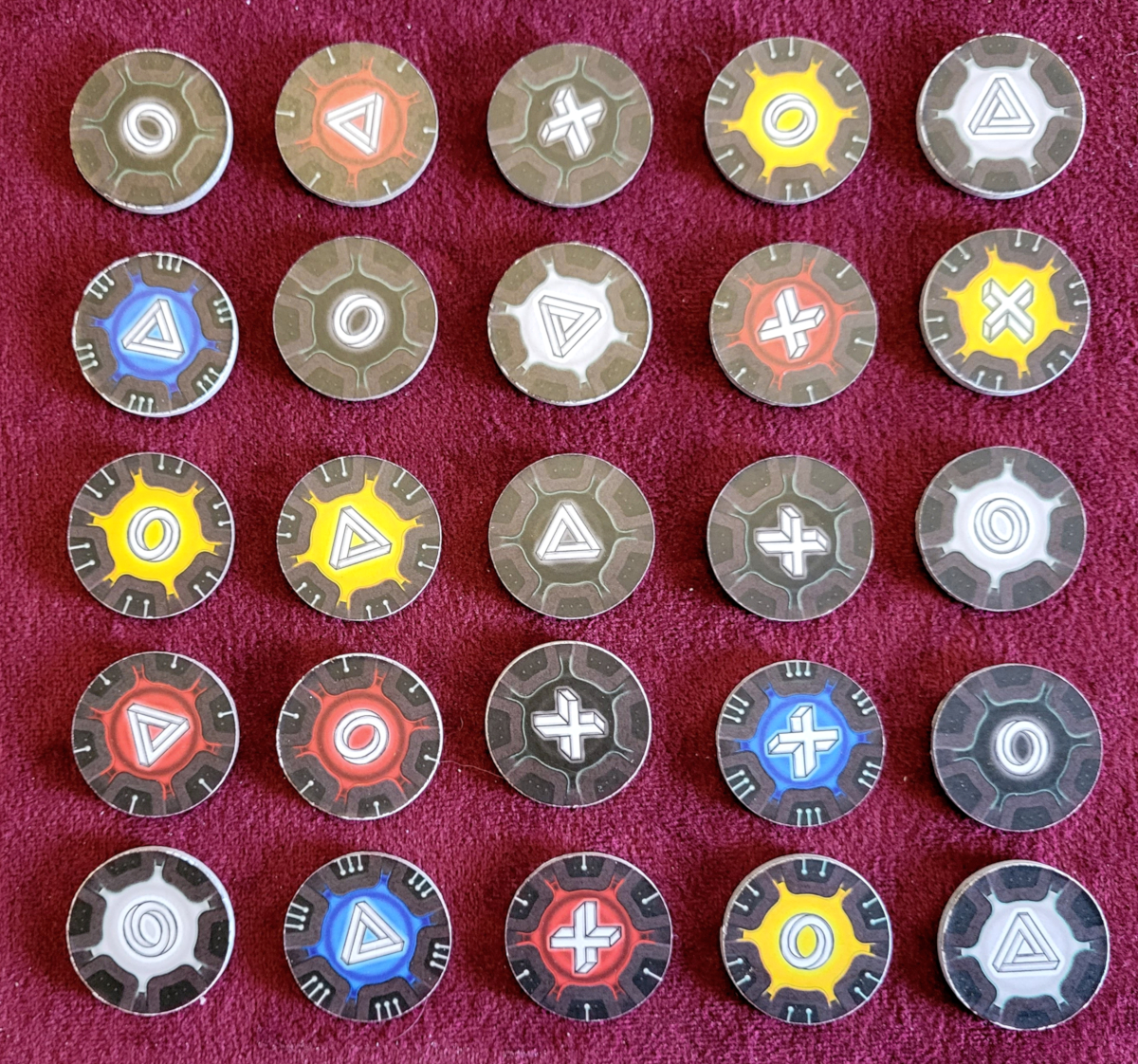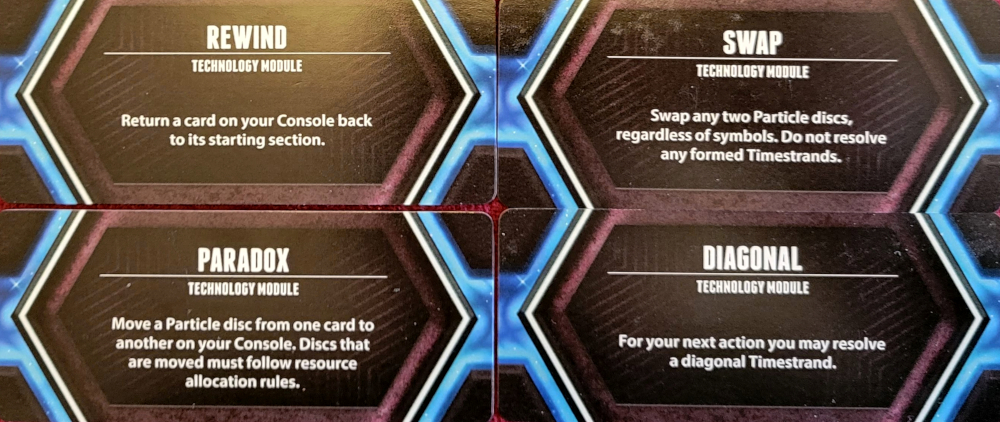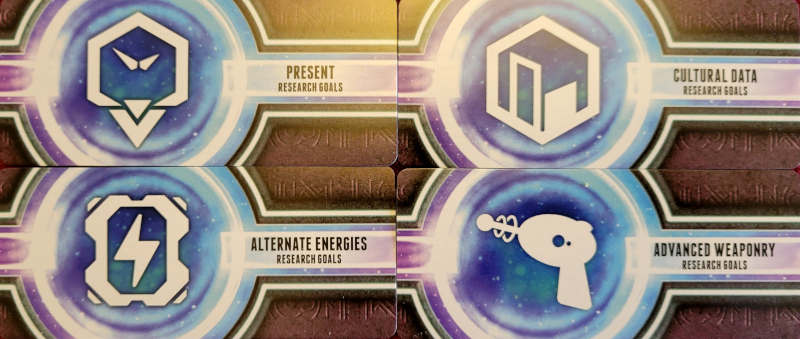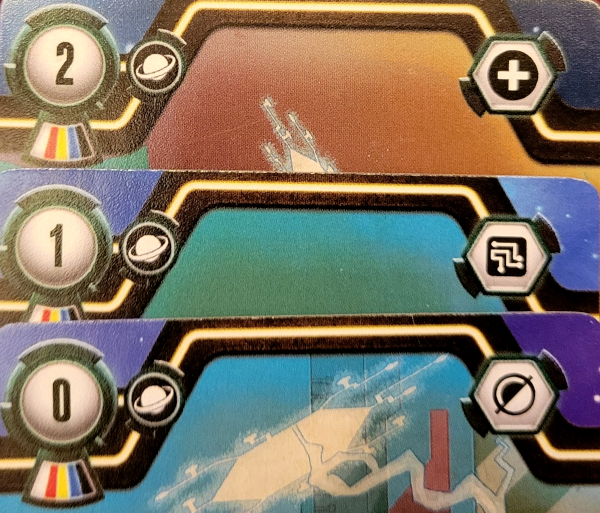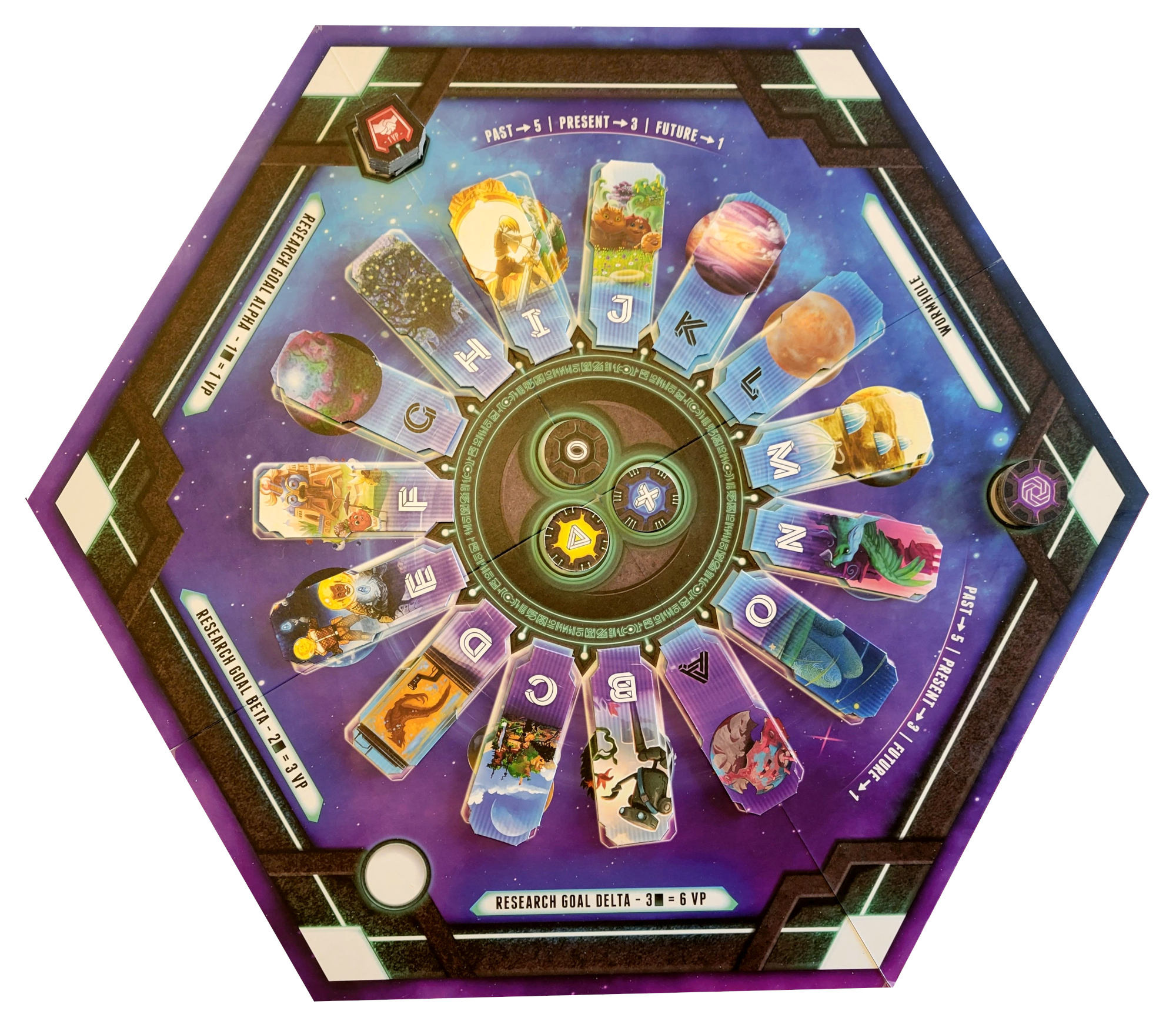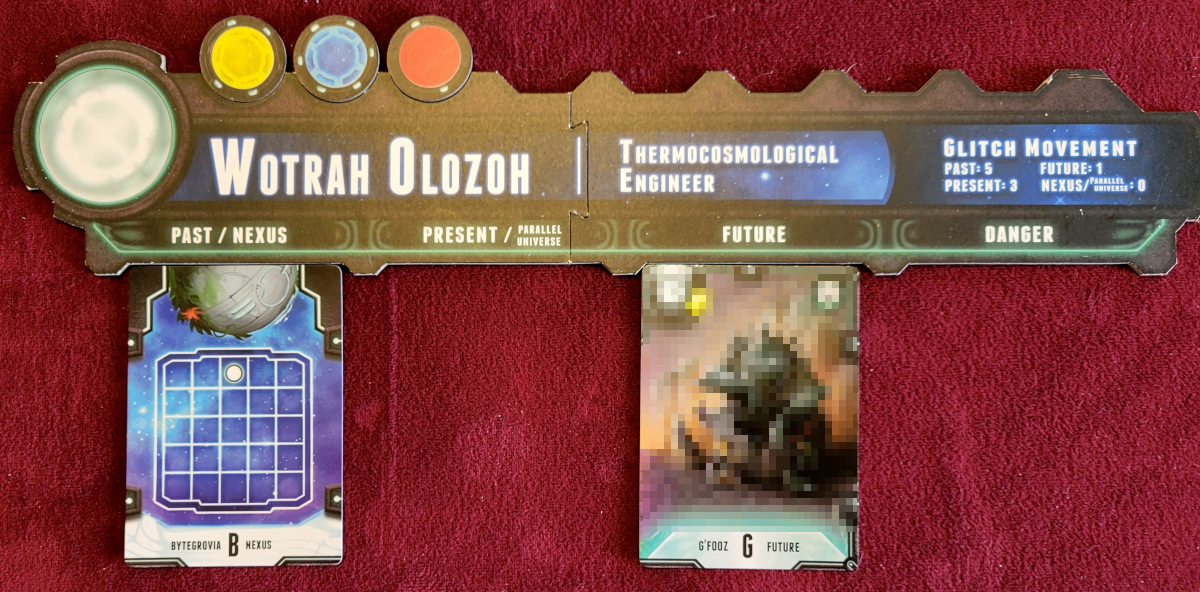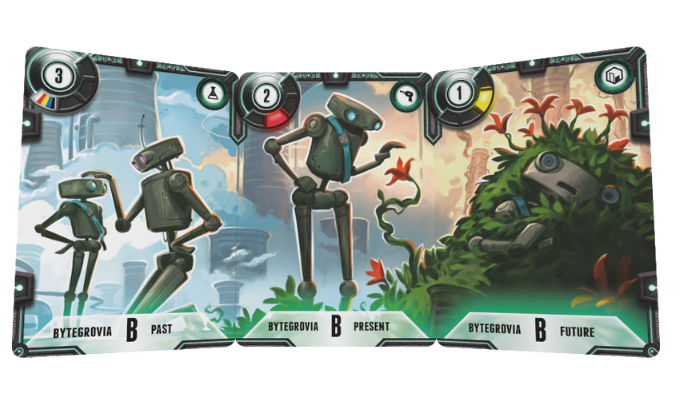Back in 2016 we reviewed a little known game called Paradox. Thanks to a 2015 Kickstarter campaign, this inaugural title by burgeoning upstart designer Brian Suhre made its way onto the board game scene, bringing with him a title that imported the “match-3” mechanic of popular tile-matching video game fame. The result was a lightweight and leisurely but substantive puzzle-based game with those adopted mechanics at its core. A little rough around the edges (as most indie games are), Paradox was nevertheless a clever idea from a first-time designer and the second release for the publisher. And it (largely) worked. It even made our Indie Spotlight for March of that year.
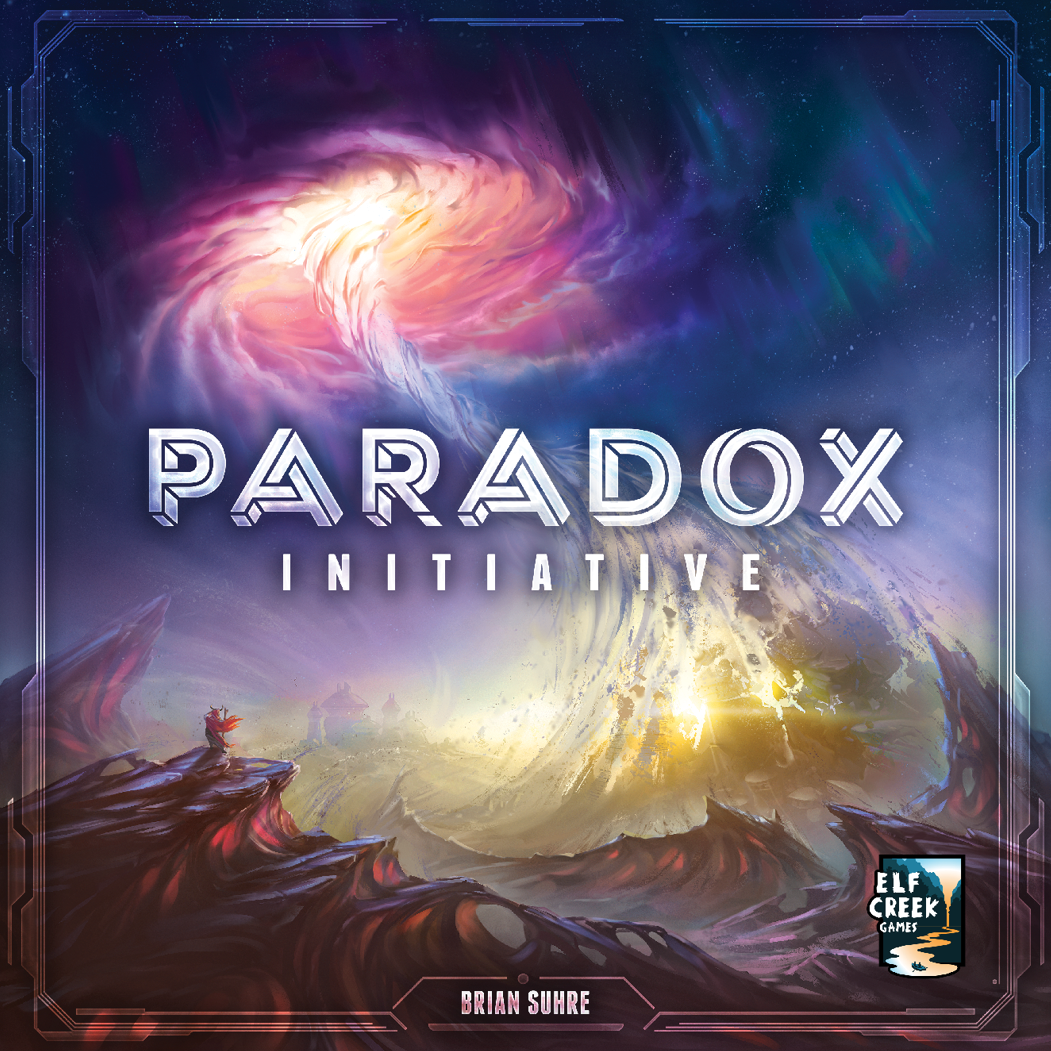 When word came that a second edition (now called The Paradox Initiative) was happening with Elf Creek Games, we were super curious to see how six years of design experience and publishing evolution affected the game.
When word came that a second edition (now called The Paradox Initiative) was happening with Elf Creek Games, we were super curious to see how six years of design experience and publishing evolution affected the game.
As part of this comparison process we wanted to refresh ourselves on the experience and planned to play the original Paradox before immediately pivoting into Paradox Initiative. But then a curious thing happened. In that process of putting them together on the table we somehow opened a tiny rift that allowed us to briefly converse with ourselves, circa April 2016.
Damn timey-wimey stuff popping up when you least expect it.
This anomaly was apparently incredibly specific – limited to this one brief window and localized solely around the game. The odds of which has to be, well, astronomical.
Not wanting to miss this rare opportunity, we grabbed a recorder and decided to make the best of it. This is what we learned:
Present Day Us: Uh, hey gang. Not sure how this happened, but greetings from 2022! Turns out time rifts are real. Weird, huh?
2016 Us: Wait, you’re really going to do this bit?
Present Day Us: Yes. Roll with it.
2016 Us: Ugh. Fine.
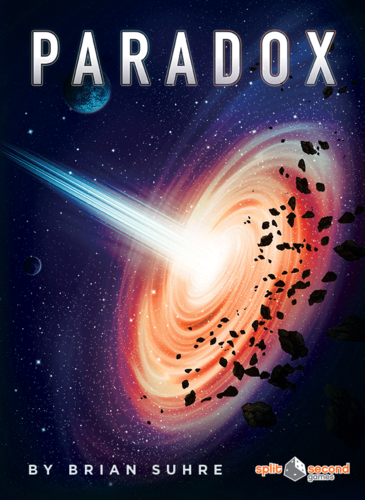 Present Day Us: So…it’s been a while. Remind us where we were at this point in time.
Present Day Us: So…it’s been a while. Remind us where we were at this point in time.
2016 Us: Um. Well we just wrapped up our first Laurel awards. Last week’s podcast was about the staying power of last year’s megahit, Codenames. And our latest review was on Paradox – which we’re assuming clearly isn’t a coincidence.
Overall though we’re making good use of our free time. The site team is humming along nicely, and we’re considering adding some new pets to the house – guinea pigs maybe? Can be a little too quiet around here sometimes, you know? Oh, and it’s an election year so there’s already a lot of focus in the news on that, but we kind of assume how that’ll turn out already.
Present Day Us: Oh. Oh you sweet summer child.
2016 Us: I get that reference! Wait…how are we doing in 2022? Or is that one of those ‘telling us can change the future’ things?
Present Day Us: Sure, let’s go with that. We’ll just say enjoy the next few months. It’s gonna get a little bumpy afterwards.
2016 Us: For how long?
Present Day Us: …
2016 Us: …
Present Day Us: Let’s move on to Paradox.
2016 Us: But
Present Day Us: Look, we literally have no idea how long this rift will last, and it seems pretty evident that’s why we’re here. A second edition of the game is going up on Kickstarter, and it’d be worthwhile to revisit the original to see which aspects have changed and which remain the same.
2016 Us: Fine. Ask away. Seems like a wasted moment though.
Present Day Us: First off, remind us about the premise of the original Paradox.
2016 Us: Considering we just posted our review of Paradox the other day, this should be easy enough for both of us to reference:
Thanks to reckless and irresponsible use of time travel, the fabric of the entire universe is coming undone at the hands of an unstable time-hopping event called the Quake. As scientists hoping to stitch the space-time continuum back together before it’s too late (and seeking a little fame in the process), players compete to repair the timelines of numerous worlds as a means of stopping the Quake for good.
Present Day Us: This is actually a good starting point, because it highlights what ostensibly is the largest functional change with the new edition. It highlights how Paradox Initiative is an interesting deviation from the standard mold of what you typically get with new editions and re-implementations.
2016 Us: How so?
Present Day Us: With most games a refit is usually focused on updating and / or improving two aspects: mechanics and production quality. While those elements are also addressed in the new version, the biggest and most notable change is actually a thematic one. In Paradox, the universe rests on a knife’s edge, the result of extensive and reckless abuse of time travel, and it’s only through the actions of the players that worlds can be saved and reality stabilized.
2016 Us: And now?
Present Day Us: Now you’re the mad scientists causing it to happen. It’s a complete tonal inversion. Instead of stitching time strands together to plug holes in the space-time continuum, you’re competing to capture pieces of timelines to feed your ‘Paradox Engine’, with each success pulling on those threads instead.
2016 Us: But you said this is a second edition. How is this even the same game then?
Present Day Us: That’s the fascinating part! They managed to effectively not retheme the game, which is done all the time, as much as flip the premise on its head – all while keeping its central framework intact. From a mechanical standpoint, about 80% of Paradox remains the same. Each round still works the same way. Players still take turns drafting Timeline cards from the market (Wormhole) and use actions to create strings of colored tiles from their Matrix grid (a “match-3” tile swapping system) to complete those cards in the quest for VP. Your mission is just less benevolent than it used to be.
2016 Us: Oh good. Because that was one of Paradox’s main strengths:
Beyond the simple pleasure of making sets, though, Paradox infuses this process with an abundance of purpose. It’s impressive the degree to which this game makes something as simple as a swapping a disc matter…
Present Day Us: Yep. This was and remains both its gameplay engine and the beating heart of Paradox’s appeal. That part is unchanged. But everything around it has either been smoothed out a little or substituted in some minor way. All of which incrementally strengthens the flow or depth of the game somehow. It still feels like the Paradox of your time but with the kinds of tweaks you’d expect from an edition-level update.
2016 Us: Wait, so why the theme change then?
Present Day Us: You’d have to talk to 2024 Us on that one.
2016 Us: Alright. But since we’re you, and you’re a gamer, you know we have to ask: what are some of these ‘minor improvements’? Or are you going to Doc Brown this?
Present Day Us: Why not. Given the next half decade coming up, knowing a single game’s version changes is the least dangerous thing we can tell you.
2016 Us: Again with the ominous…what the hell hap-
Present Day Us: ANYWAY, Paradox definitely makes some modifications that add up to an improved experience. Most notably is through a pair of new mechanisms which expands player choices. For instance, as an alternative to taking a card per usual during the Wormhole phase, you may now instead choose to draw a Tech card, providing a once-per-game effect when used, or you may activate one of your three new Trigger discs. These Red, Blue, and Yellow discs can be activated this way as an action or whenever you create a string of its color. As free actions at any point during your turn you can spend Tech cards and / or flip all three activated Trigger discs for a newly-added wild purple resource.
To adjust for this, each player now has two actions per Wormhole phase – instead of just the first player – done in a snake draft format. And the first player actually goes first here now instead of last. The Research Hand, while a mildly interesting way of foreseeing future card details, has been excised.
2016 Us: It sounds like Paradox 2.0 slightly more forgiving.
Present Day Us: A little, but it’s also more dynamic. These and other tweaks create a slightly more robust strategic bench to work with. Oh, speaking of which:
After the 12th round, the game ends. At this point any completed cards belonging to Fractured worlds are discarded, as they no long exist.
Neither of these facts are applicable anymore either. For one, Paradox Initiative adopts the less punishing intro game rule of the original where you only lose a single world card, not all of them, if the corresponding world on the board ends the game Fractured. Also, that otherworldly threat which causes worlds to become Fractured when it lands on them is called the Glitch now, not the Quake. For Reasons.
Moreover, instead of a fixed 12 rounds Paradox ends when the Timeline deck is empty. This reduces the number of rounds to 8 or 9, depending on the number of players, addressing a common critique many had about dragging gameplay at higher player counts.
2016 Us: That does sound familiar. Four players definitely was arduous sometimes with the degree of downtime in this otherwise casual game.
Present Day Us: You can see the developmental trend with Paradox Initiative then. Given its weight class, these are welcomed adjustments. But there others too, including:
- Setting up the tile bag has been simplified a little.
- The Nebula cards, which often felt superfluous and arbitrarily punitive against using the central anomaly spaces, have been removed.
- Both Paradox’s colored Alliance tokens, which let you bank one resource for later or saved for 1 VP at game’s end, and the Research Goals, which provide additional endgame scoring bonuses to plan around, have been incorporated fully into the game and are no longer optional modules.
- In 3-4 player games Paradox no longer uses two different Wormhole rows, opting for a single pool of cards. A non-rotating second row is used in 1-2 players to offset this uptick in card selection volatility though and allows you to still plan ahead to a degree.
- Also, yes there’s a solo mode now. Given the origins of central mechanic we’re sure you’ll appreciate the irony. Because we do.
Beyond those, the only other rule change of note is that Paradox no longer has selectable Scenarios. 4/5 of the Scenarios have been removed entirely while the Parallel Universe cards have been added to the core game. These cards work the same as before (acting as a wild for endgame planet set scoring) but now requires 1 of its 3 resources to be one of those wild purple resources.
In their wake Paradox Initiative substitutes three new card triptychs called Research Projects. These behave similarly to saving planets, with two differences. For one, they provide one-time bonus effects when completed, providing even more tactical and timing tools to leverage. More intriguing, though, is that in addition to needing normal resources to complete them, each Research Project requires you repair a Fractured world (or shield a safe one).
2016 Us: So that means –
Present Day Us: Yes! It gives you more of a reason to focus on the central board! Sorry, being us we knew what you were going to say. Because that was one of the chief criticisms of Paradox:
Although its purpose is vitally important – dictating which cards will be worth anything at the end of the game – it’s not uncommon for it to be largely ignored until the last few rounds. Because the Quake has no impact on an already Fractured world, there’s little imperative to shore up or shield planets until the later stages of the game unless you have the resources to spare.
Further addressing that gap, Paradox Initiative also rewards players an extra 1 VP for having cards from shielded worlds at the end. This, combined with the less painful scoring rule, means the main board is not relegated to a late game scramble and gives it a little more agency.
2016 Us: This all seems like a lot on paper, but I can see why it doesn’t upend the main thrust of the game all that much.
Present Day Us: Not at all. And it’s minor compared to the physical changes.
2016 Us: Tell us Paradox at least keeps the diverse world murals. That was kind of its signature charm:
Each of the 15 named worlds are illustrated by 15 different artists, giving every world a unique and distinctive style. This not only provides a diverse array of imperiled planets throughout the game but when mixed together deftly conveys the idea of a jumbled space-time continuum coming apart at the seams.
Present Day Us: Yes and no. Paradox Initiative has been given a complete top to bottom facelift.
2016 Us: Like…in a good way? Because those kinds of moves aren’t always for the better.
Present Day Us: Oh, totally. You have nothing to worry about. With that at least. Plenty of other things to worry about in store instead.
2016 Us: Such as – actually never mind. You’re not going to tell us anyway.
Present Day Us: We are not.
2016 Us: The worst. You were saying.
Present Day Us: While it looks familiar to those aware of the first edition, Paradox Initiative is physically a complete re-do. The main board still houses the worlds track, which is larger and blissfully arranged alphabetically now (making it easier to track your cards), and the status tokens have been given artwork to match their respective planets instead of just a letter. The thin player boards have been replaced with stylized punchboard consoles. And everything has gotten a sharper, more colorful graphic design overhaul, including the Matrix tile tokens themselves. They are busier than the spartan-yet-effective tokens in Paradox, but they are now coded for color impairments and reinforce the game’s visual boost overall.
2016 Us: And…
Present Day Us: And yes, Paradox Initiative hasn’t just kept the ‘artistic worldview across timelines’ angle but doubled down on it. Paradox showcased illustrations from 15 distinctly different comic book artists of varying styles and pedigrees, and when mixed together really conveyed the sense that space-time was pretty messed up. Paradox Initiative has commissioned 18 all new pieces for the 15 worlds and 3 Research Projects.
The twist is that every piece has been done by some of the most iconic and well-known artists in board gaming. If you have a favorite tabletop artist, they may very well be involved here. For instance, this is the piece by the esteemed Andrew Bosley:
Once again you get a collision of numerous styles and motifs, with the same immersive reaction. Nothing inherently wrong with those of the original Paradox, but the overall presentation here feels much more polished and cohesive.
2016 Us: That is pretty impressive. The art was one of the catchiest part of Paradox, but the new version does sound next level.
Present Day Us: Indeed. It also makes an excellent hook as a selling point. So that helps. But hey, it looks like this portal is starting to deteriorate. Any final questions?
2016 Us: A ton. But you probably mean just about the game, don’t you?
Present Day Us: Most definitely.
2016 Us: Kind of hate you a little right now.
Present Day Us: We get that a lot.
2016 Us: Well it really does sound like this second edition makes some notable adjustments and upgrades. Do they ultimately affect its intended audience at all?
Present Day Us: Good question, us! Short version? No. If you liked the original Paradox, you’ll enjoy The Paradox Initiative even more. If you didn’t, this likely won’t change your mind. Despite development fine-tuning that smooths out some pain points and new features which add some breadth and depth to a player’s options – alongside an impressive new table presence – Paradox is still fundamentally the same experience. But that’s not a negative. Downtime between turns can still be an issue, but what Paradox Initiative has otherwise done with its original tile-matching template only serves to bolster its appeal with casual audiences even further.
As we said all those days/years ago:
With simple rules and a passive approach to turn-taking, Paradox has all the hallmarks of a solid Gateway Plus game.
With this new version it’s even more true now than it was back then.
2016 Us: And now we have to wait six years to find this all out. Super. Thanks.
Present Day Us: Don’t worry, you’ll have more pressing things until then. But for everyone else they don’t need to wait. Because if this foray into mucking around with the space-time continuum for the fun of it sounds like your kind of experiment, you can match up those interests for The Paradox Initiative right now over on its Kickstarter!
2016 Us: Seriously, any useful last-minute advice from the future to share?
Present Day Us: Sorry, what? You’re breaking up! Portal…Tunnel…Luck…Need it…
Photo Credits: The Paradox Initiative cover and artwork by Elf Creek Games.

